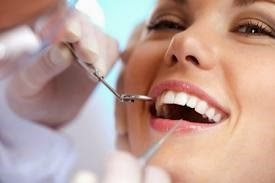What is Plaque
When food and saliva combine in the mouth they create a soft deposit called plaque, a sticky, colorless film that is constantly coating the teeth. Plaque contains millions of bacteria, and when you consume foods and drinks that have sugars and starches the bacteria uses it to create acids that attack the enamel surrounding the teeth. Because plaque is so sticky, these acids can stay on the teeth for long periods of time if you do not floss and brush frequently. Over time, allowing plaque to build up on the teeth can lead to tooth decay and gum disease.
Gingivitis and Periodontitis
Gingivitis is a swelling of the gums caused by a buildup of plaque. This mild form of gum disease can irritate the gums, causing bleeding, soreness and inflammation. When the gums become inflamed, they separate from the tooth, causing a space or a “pocket” between
the tooth and gum. Gingivitis can usually be treated by flossing and brushing to remove the plaque that has formed on the teeth. If this plaque is not removed, it will invade the pockets, allowing bacterial toxins to irritate the area and cause chronic inflammation, called periodontitis. Periodontitis can destroy the soft tissue and gums surrounding the teeth, and if left untreated can lead to losing your teeth.
Health Risks Related to Gum Disease
Gum disease can have negative effects on your overall health, not just your oral health. New research and studies are being conducted to examine the possible links between advanced periodontitis and other health complications including heart disease, stroke, premature births, diabetes, and respiratory problems.
Preventing Plaque
It’s simple to avoid gum disease by having good oral hygiene. Make sure to brush your teeth at least twice a day, once in the morning and once before bed, and to floss at least once a day. An even better way to stop plaque from accumulating is to brush after every meal or snack consumed throughout the day. It is also important to visit your dental hygienist every six month.

